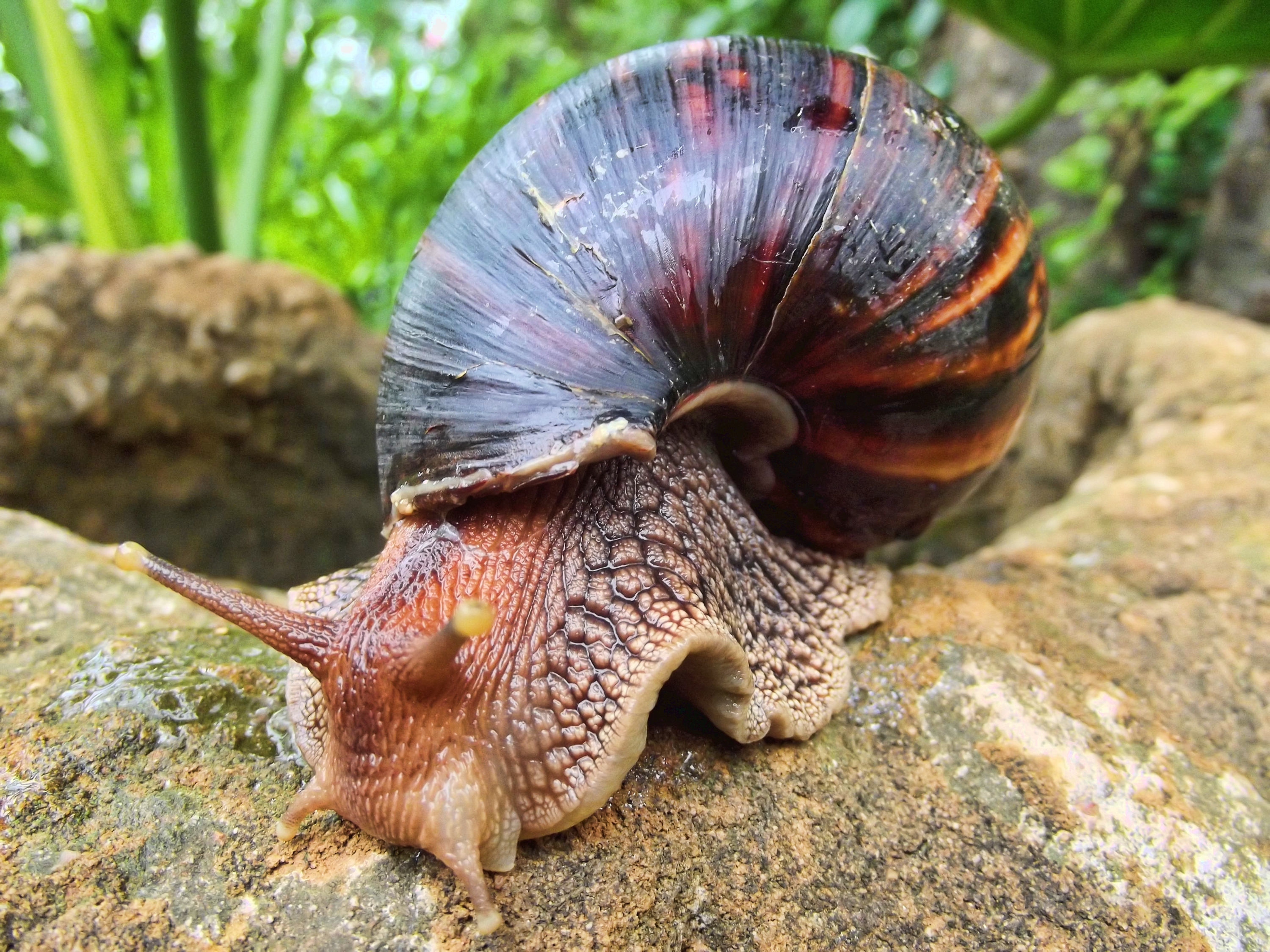1 Nov 2013

The Giant West African Snail (Archachatina marginata). By Sonel.SA (Own work) [CC-BY-SA-3.0 (http://creativecommons.org/licenses/by-sa/3.0)], via Wikimedia Commons
For the first part of my career my “special interest”, and something I became gradually better known for, was exotics. However, in my first jobs, getting the bosses to take the specialty (and me) seriously was tough.

In the middle years I was expanding my skill set and breaking new ground: anaesthetising an giant African land snail, performing a nephrectomy on a king snake, and making a four-foot-long exploratory incision in a Boa constrictor were particularly memorable cases… but the memorable cases became fewer and further between as time went on.
The thing you learn very quickly with exotics is that, nine times out of ten, the husbandry is lacking in significant ways. However, getting people to believe you when you tell them this is an art.
Then there’s the state they arrive in…
I have been a vet for a long time, but I cannot see into the future – yet owners seem able to do this on an alarmingly regular basis, managing to present their animal to you just minutes before the desiccated rubber-boned husk in front of you finally and mercifully arrests and dies. They often need a priest more than a veterinary surgeon.
Over years and years this takes its toll on your enthusiasm and you have to move on, even if just temporarily.
Then I joined the local out-of-hours service, only to find that the last-gasp presentation isn’t confined to exotics – it can be a problem in dogs and cats, too.
I don’t know if it’s confirmation bias, but I think people are leaving sick animals longer before presentation. When I did emergency work in the mid-noughties (pre-economic apocalypse) dogs and cats were generally presented after 2-3 days of illness, many the next day. These days it seems they are presented after longer – 5 days to a week is quite common.
In fact, this past couple of weeks, I have seen quite a few animals presented moribund, although the owners have been honest enough to say that their animal has been sick and declining for quite a while.
I think finances are a big part of the problem for people, but there is also the issue of education. Somehow, as a profession, we need to get across that the costs of fixing a patient after a day or two of “not looking right” are going to be a lot less than resuscitation and stabilisation once it’s dehydrated and collapsed.
But that is a bigger job than I can do!